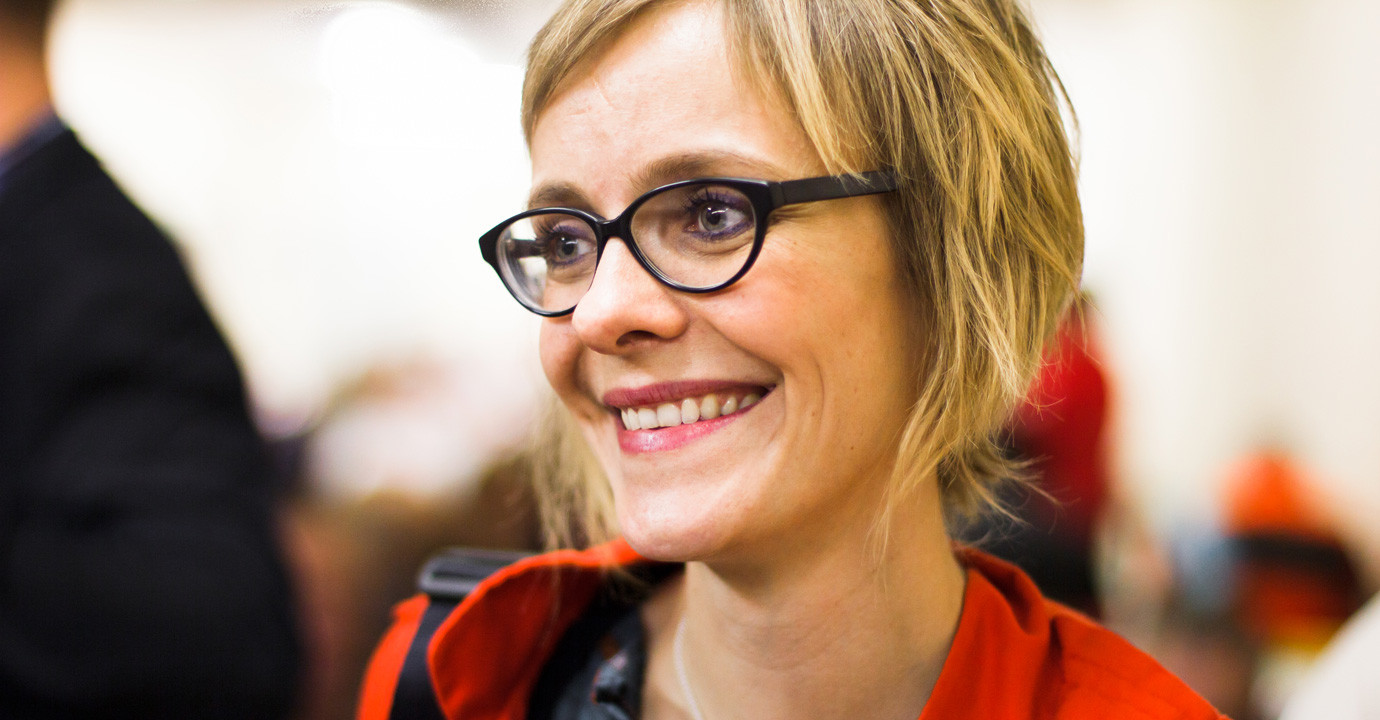A chat with Clio Brzakala, director of Wallonie Design, in charge of the general management of RECIPROCITY design liège
What are the objectives of Wallonie Design?
Wallonie Design aims to turn design into a cultural and social economic development tool in Wallonia. We work on developing SMEs through design and support designers to develop their activities. We also provide services open to design students, institutions / communities and the general public.
What are the common values between RECIPROCITY and Wallonie Design?
We are all really committed to work of quality, which is useful and responds to the changing needs of society, whether they be economic, environmental, cultural, sociological, or a mix of those and more. I also know that both structures try to involve as broad a range of contributors as is possible, so that people can participate in different ways. The weird logic of the 1 + 1 = 3 formula might be familiar, but it makes perfect sense for RECIPROCITY and Wallonie Design: the shared desire to make things happen has undoubtedly strengthened our convictions and actions.
We are all really committed to work of quality, which is useful and responds to the changing needs of society
How does RECIPROCITY successfully integrate into the local structures of Liege, and be close to its citizens?
Well, in the first place it’s largely down to the warm and motivated welcome that people give our team and experts. What motivates us are them, the people, associations and students, which come together – sometimes spontaneously – to make our actions, and in turn theirs, have greater impact. We are there to help them move on, to strengthen their projects by integrating design as a vector of change. Our support (in various scales) of projects such as the Saint-Gilles neighbourhood of Liege and that of Trasenster in Seraing go in this direction. Finally, even though RECIPROCITY design liège is only in its second edition, we feel an ongoing enthusiasm that is very encouraging.
It looks like Liege could become the next design centre in Belgium and the Euregio. What do you think about that?
Wallonia and in particular the Province of Liege do not lack ambition in terms of design, whose role as a vehicle for change is well established. This is the result of strategic work by the public authorities, political representatives (notably Jean-Claude Marcourt, the Walloon Minister of Economy, and the Provincial Deputy for Culture in Liege, Paul-Emile Mottard) and Walloon operators active in the field of design. I think it is true to say that Liege is now acknowledged as a focal point of design, and for several reasons: it has an industrial infrastructure that works increasingly with designers; recognised and relevant designers; the presence of design schools; the existence of RECIPROCITY and its ongoing nature; institutions active in design such as Wallonie Design, Design Job’in, RElab; the leading role played by the Liege-based Wallonie Design in design projects developed right across the Euregio Meuse-Rhine.. And last but not least: the construction of the Design Station, a new design centre in the city, which will be inaugurated during RECIPROCITY. All this tends to reinforce Liege’s pole position for design in Wallonia and the Euregio. But likewise on the Belgian level, I think humility is required, and I also recognise and greatly appreciate the excellent work done by our Flemish and Brussels counterparts.
The opening of the new design centre, Design Station, is a big thing for Wallonia. Can you tell us more about it?
The Design Station is a place dedicated to design, but also more generally economic development. The construction of this centre has been implemented by the Spi (an economic development agency), along with the help of EU Structural Funds and Wallonia. So when the Design Stations opens in October during RECIPROCITY, the centre will fulfil several functions: an exhibition and conference space; a workspace for creatives; a rapid prototyping & manufacturing lab; a workshop; office spaces for rent; and Job’in Design (an organisation that supports designers in launching their activities) and Wallonie Design’s teams are also making it their new home.
The Design Station is a place dedicated to design, but also more generally economic development.
How is Wallonia and Liege internationally positioned in the context of social and cultural innovation?
In 2012, when the Province of Liege asked us to redefine the meaning of the International Design Biennale, which was launched in 2002, we gave ourselves time to think and had many conversations with the freshly appointed artistic director, Giovanna Massoni. We could have chosen a position that was more fashionable, commercial or elitist in its approach, but the choice to investigate social innovation was motivated by both its real usefulness and also by the lack of related projects about social innovation and design in Belgium and beyond our borders. Our position, by fully dedicating RECIPROCITY to this theme, is incredibly strong and unequivocal. Design, and now social innovation for change, is our motto.
photography © Antoan Kurti

